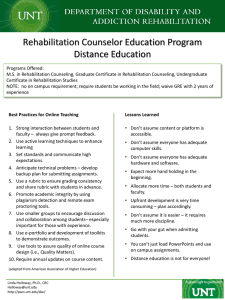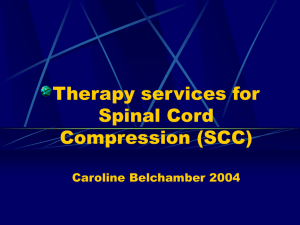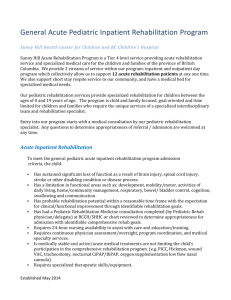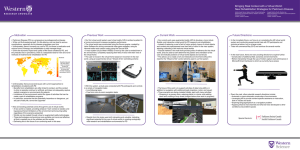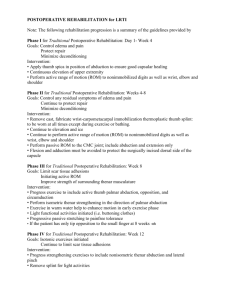Possible incremental benefits of specialized rehabilitation bed units
advertisement
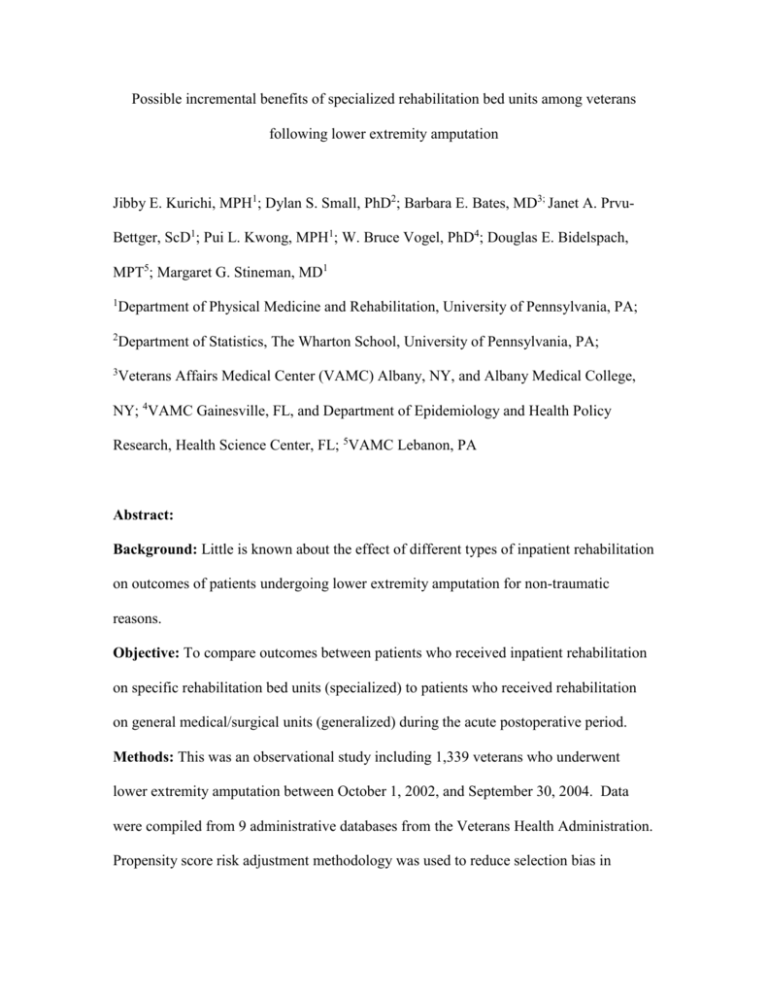
Possible incremental benefits of specialized rehabilitation bed units among veterans following lower extremity amputation Jibby E. Kurichi, MPH1; Dylan S. Small, PhD2; Barbara E. Bates, MD3; Janet A. PrvuBettger, ScD1; Pui L. Kwong, MPH1; W. Bruce Vogel, PhD4; Douglas E. Bidelspach, MPT5; Margaret G. Stineman, MD1 1 Department of Physical Medicine and Rehabilitation, University of Pennsylvania, PA; 2 Department of Statistics, The Wharton School, University of Pennsylvania, PA; 3 Veterans Affairs Medical Center (VAMC) Albany, NY, and Albany Medical College, NY; 4VAMC Gainesville, FL, and Department of Epidemiology and Health Policy Research, Health Science Center, FL; 5VAMC Lebanon, PA Abstract: Background: Little is known about the effect of different types of inpatient rehabilitation on outcomes of patients undergoing lower extremity amputation for non-traumatic reasons. Objective: To compare outcomes between patients who received inpatient rehabilitation on specific rehabilitation bed units (specialized) to patients who received rehabilitation on general medical/surgical units (generalized) during the acute postoperative period. Methods: This was an observational study including 1,339 veterans who underwent lower extremity amputation between October 1, 2002, and September 30, 2004. Data were compiled from 9 administrative databases from the Veterans Health Administration. Propensity score risk adjustment methodology was used to reduce selection bias in looking at the effect of type of rehabilitation on outcomes (one-year survival, home discharge from the hospital, prescription of a prosthetic limb within one year post surgery, and improvement in physical functioning at rehabilitation discharge). Results: After applying propensity score risk adjustment, there was strong evidence that patients who received specialized versus generalized rehabilitation were more likely to be discharged home (risk difference=0.10), receive a prescription for a prosthetic limb (risk difference=0.13), and improve physical functioning (gains on average 6.2 points higher). Specialized patients had higher one-year survival (risk difference=0.05), but the difference was not statistically significant. The sensitivity analysis demonstrated our findings to be unaffected by a moderately strong amount of unmeasured confounding. Conclusions: Receipt of specialized compared to generalized rehabilitation during the acute postoperative inpatient period was associated with better outcomes. Future studies will need to look at different intensity, timing, and location of rehabilitation services. Key words: rehabilitation; lower extremity; amputation; outcome assessment; selection bias






